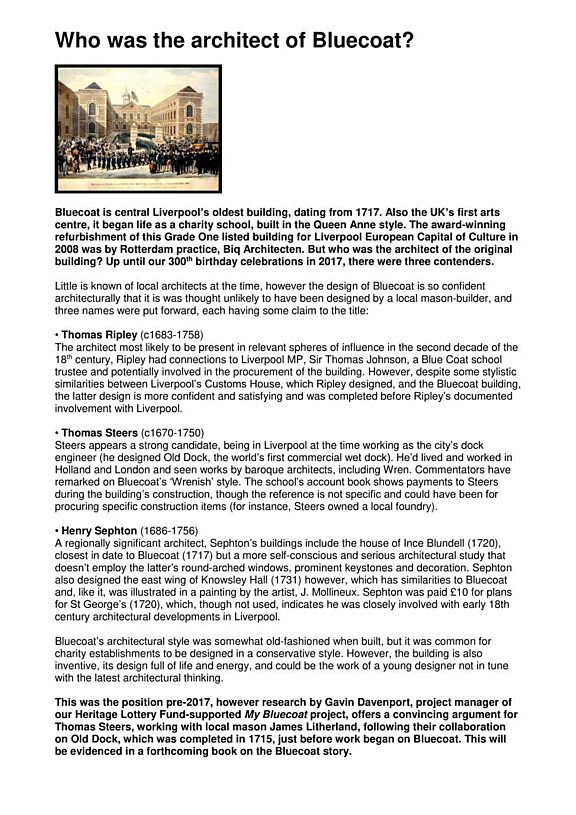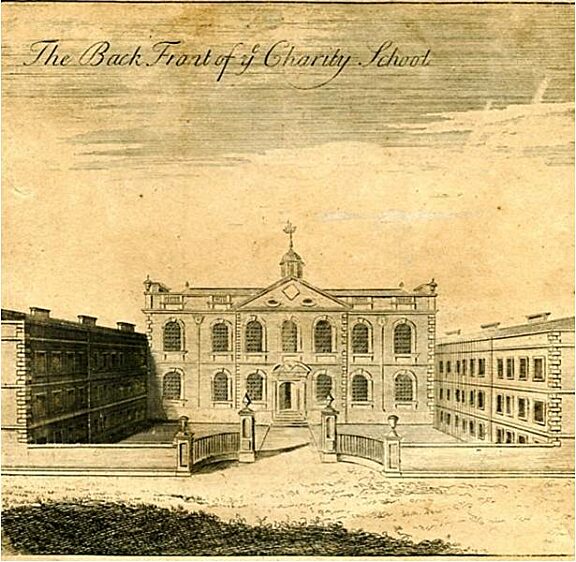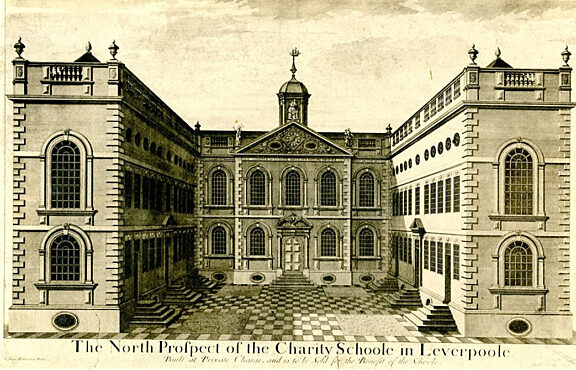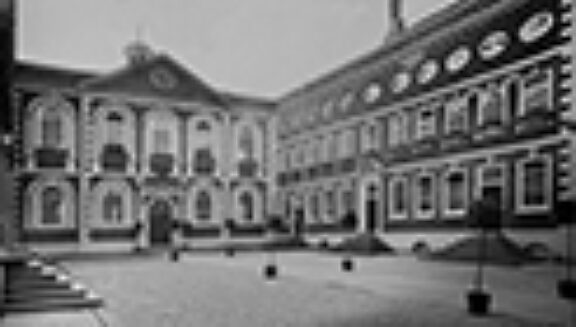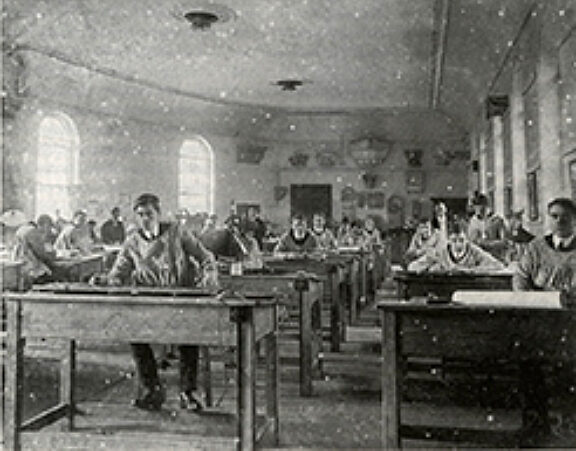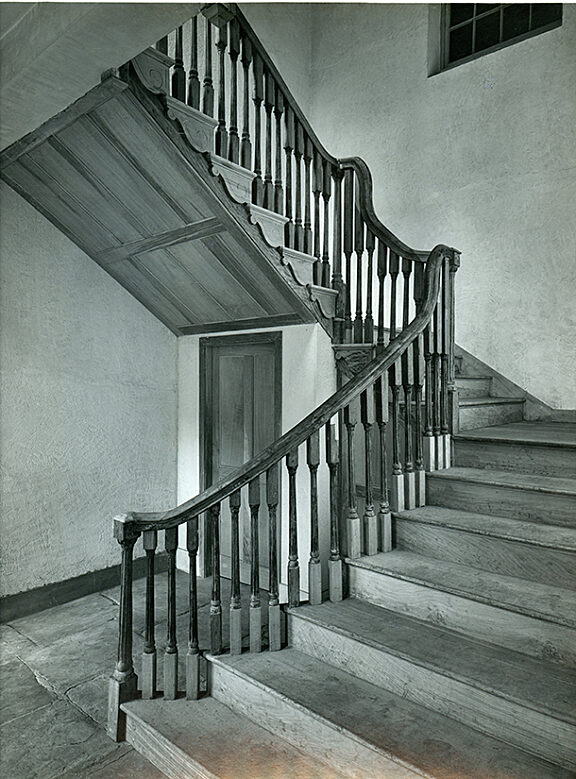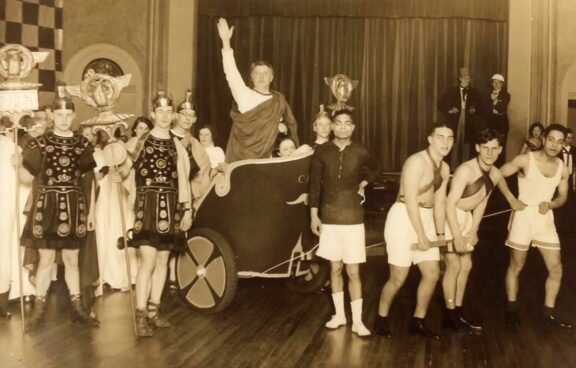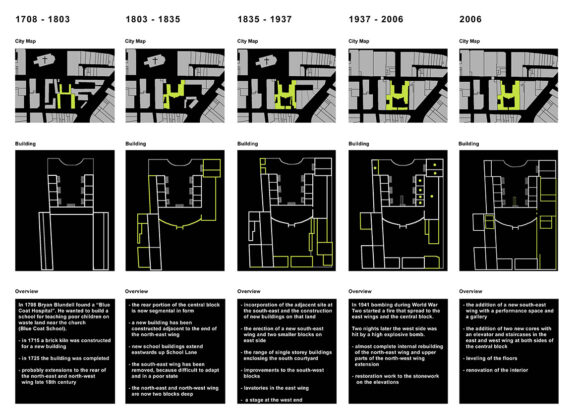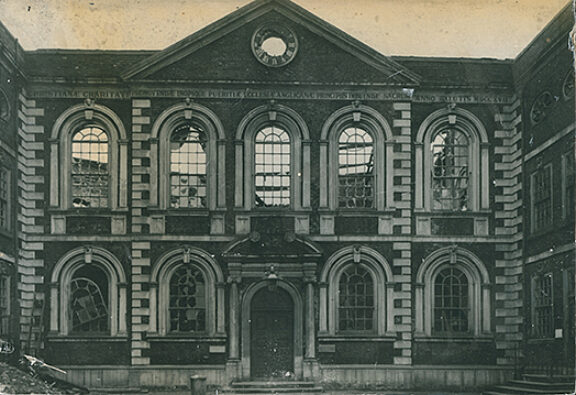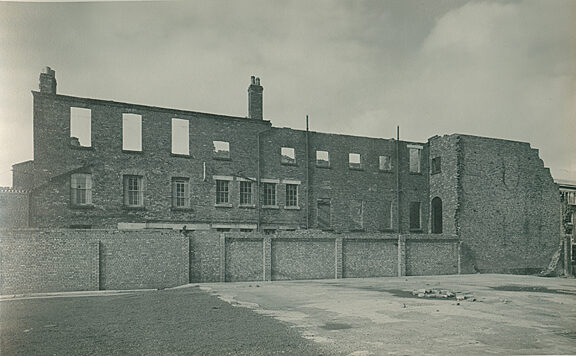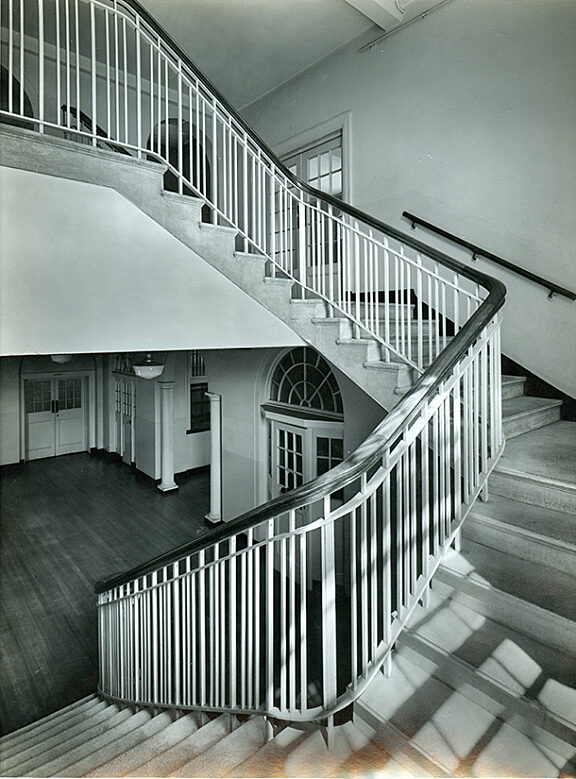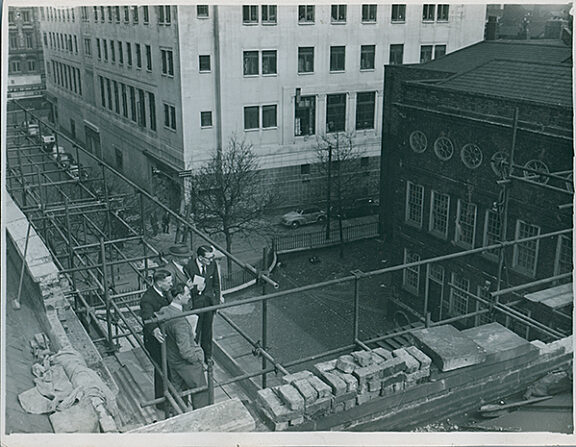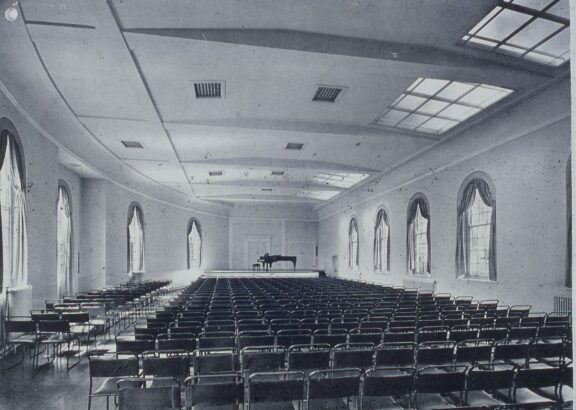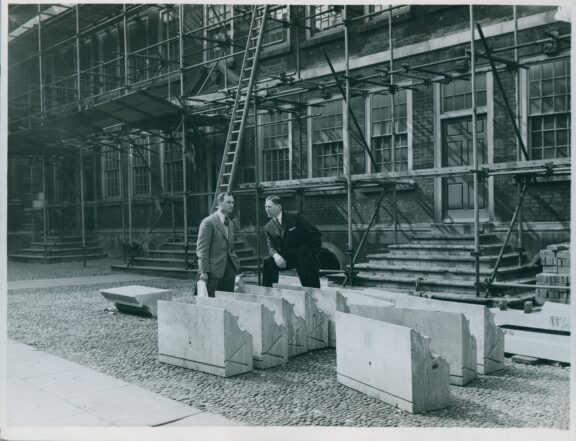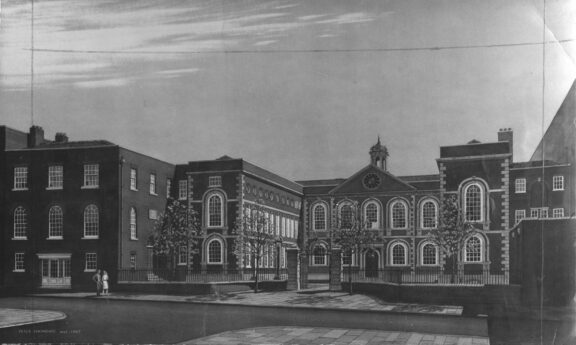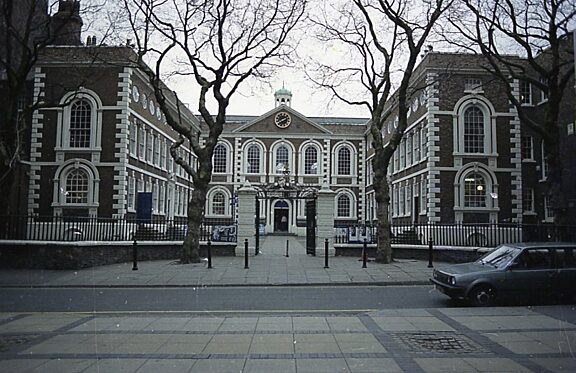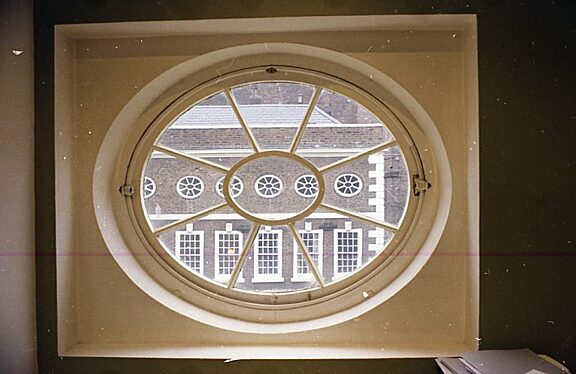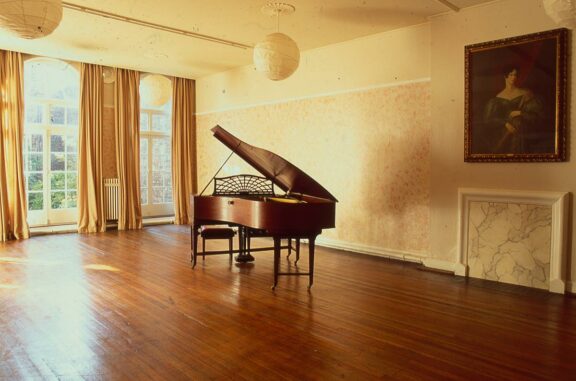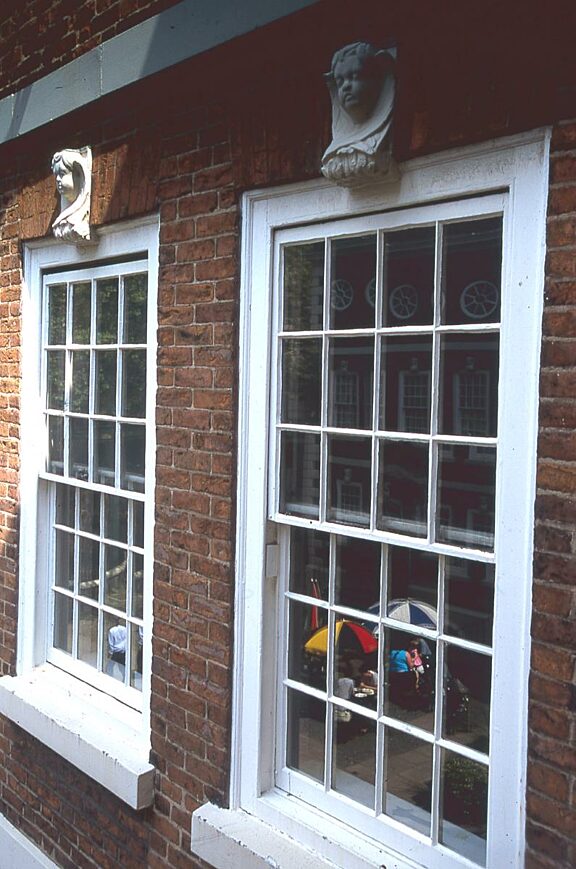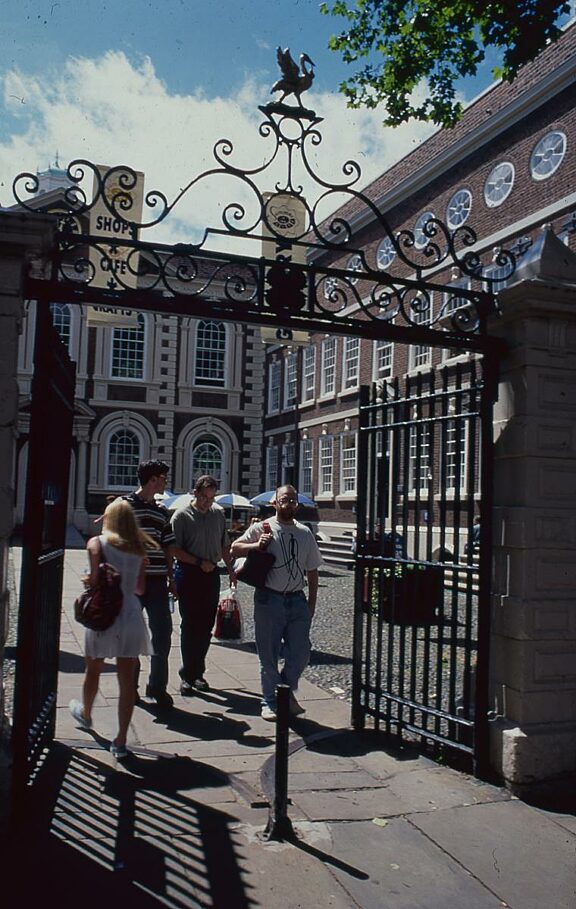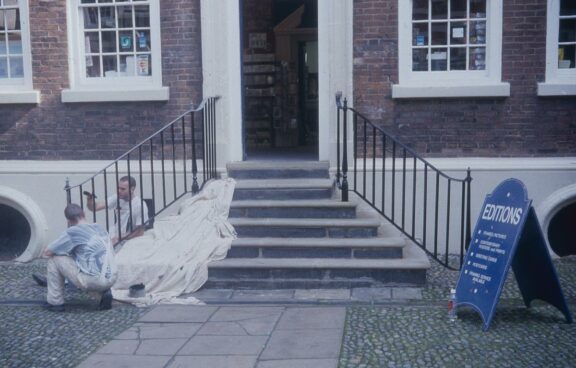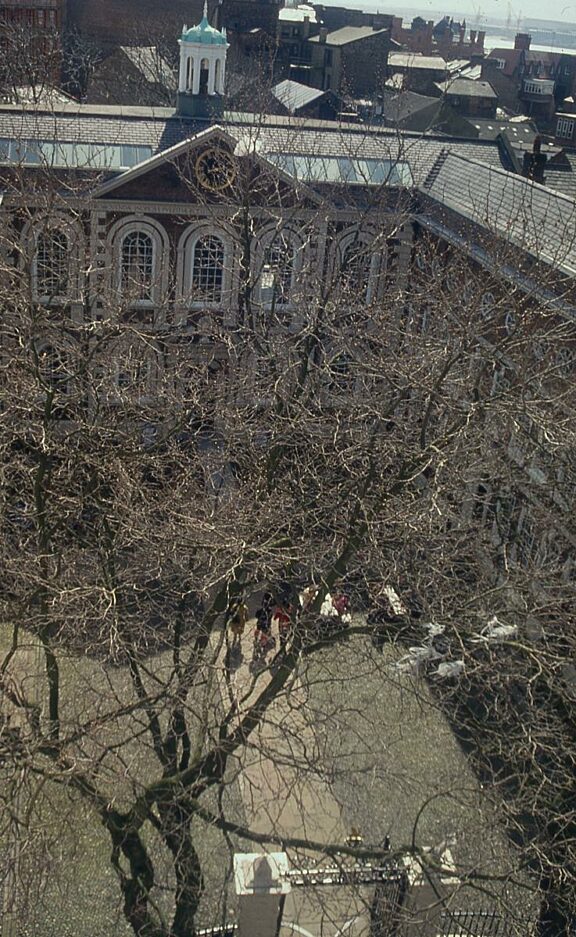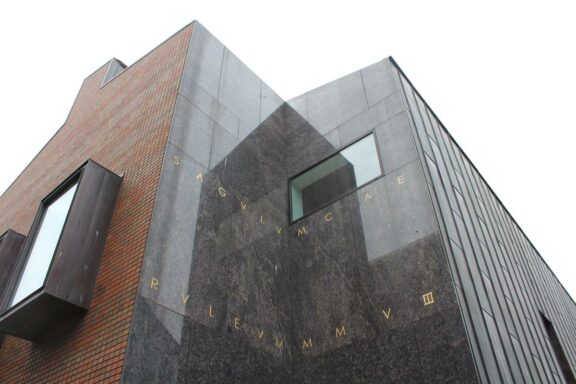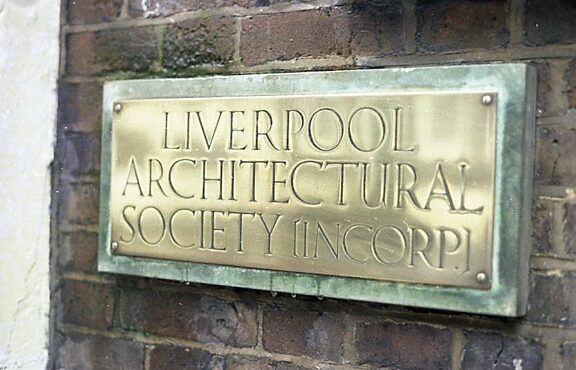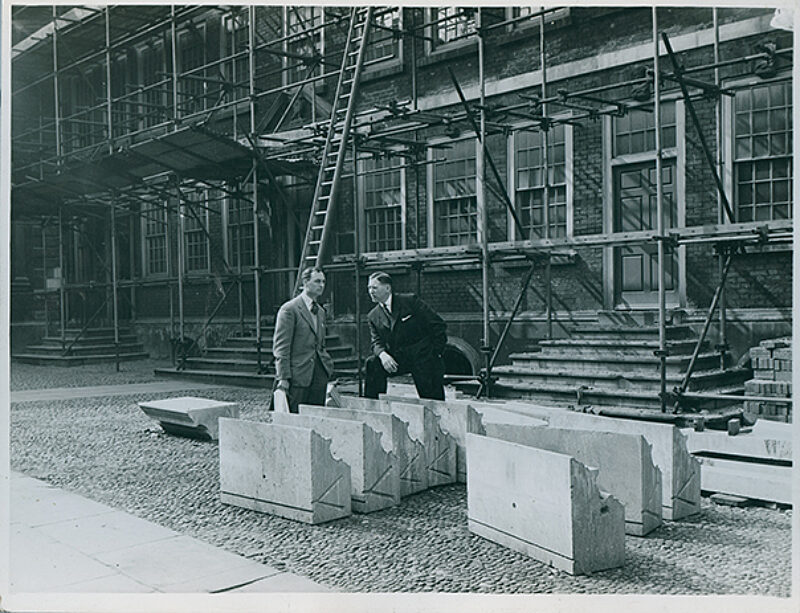
Bluecoat's distinctive architecture marries the old with the new. The oldest building in central Liverpool and the UNESCO World Heritage Site, its Queen Anne style (though it was actually built after her death) is a fine example of late English baroque architecture. The first occupants, the Liverpool Blue Coat School (or Hospital), expanded for nearly two centuries, adding or replacing parts of the original building, while retaining its capital H shape and front façade features. Further renovation took place when the building formally became an arts centre in 1927. Severely damaged in Liverpool May blitz of 1941, Bluecoat was restored again, reopening in 1951, with further repairs that decade. The most recent changes saw a complete refurbishment and addition of a new arts wing in 2008. This collection comprises material - maps, drawings, photographs and documents - relating to this history and the presence of architectural practices in the building since the early 20th century.
Image: Architects inspecting cornices for the post-war repairs to the building in 1955.

